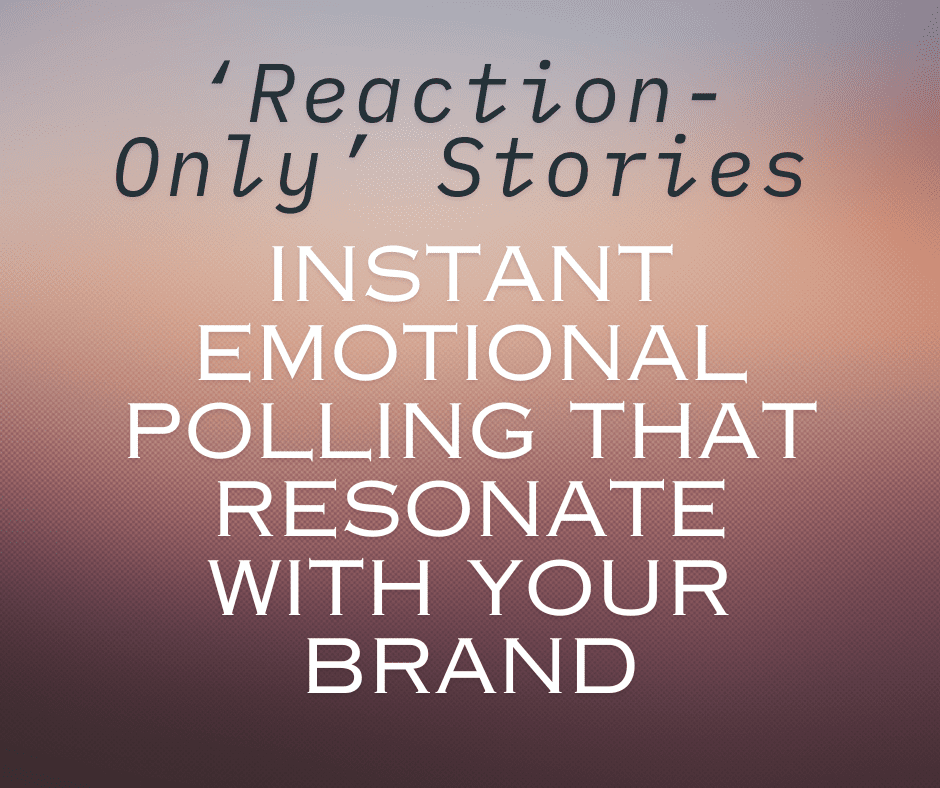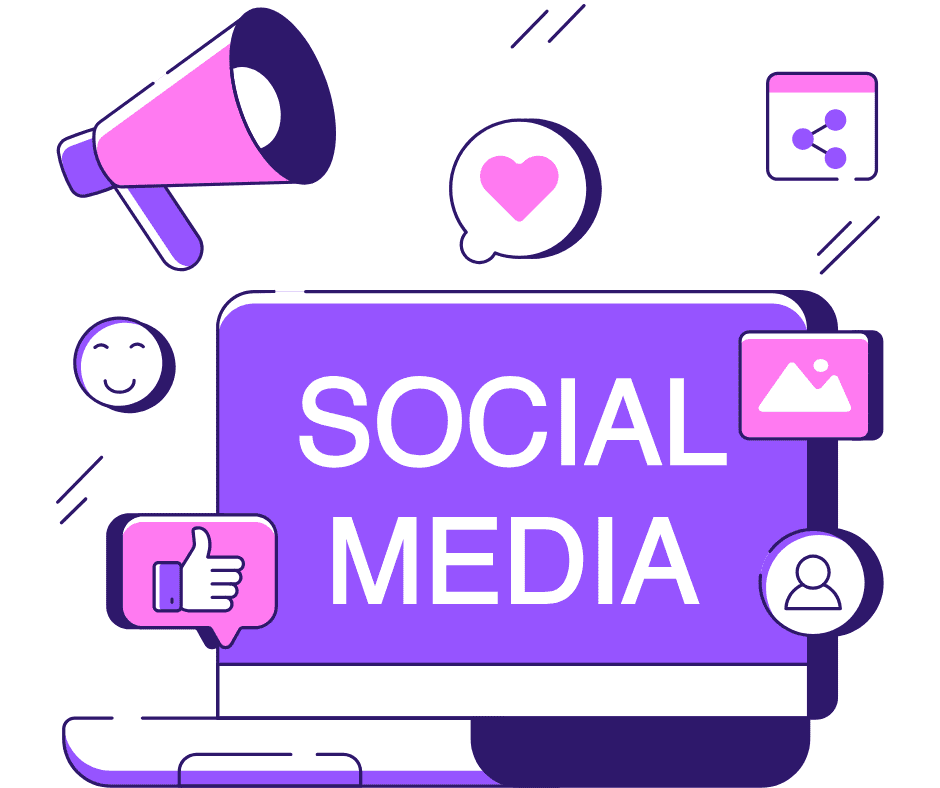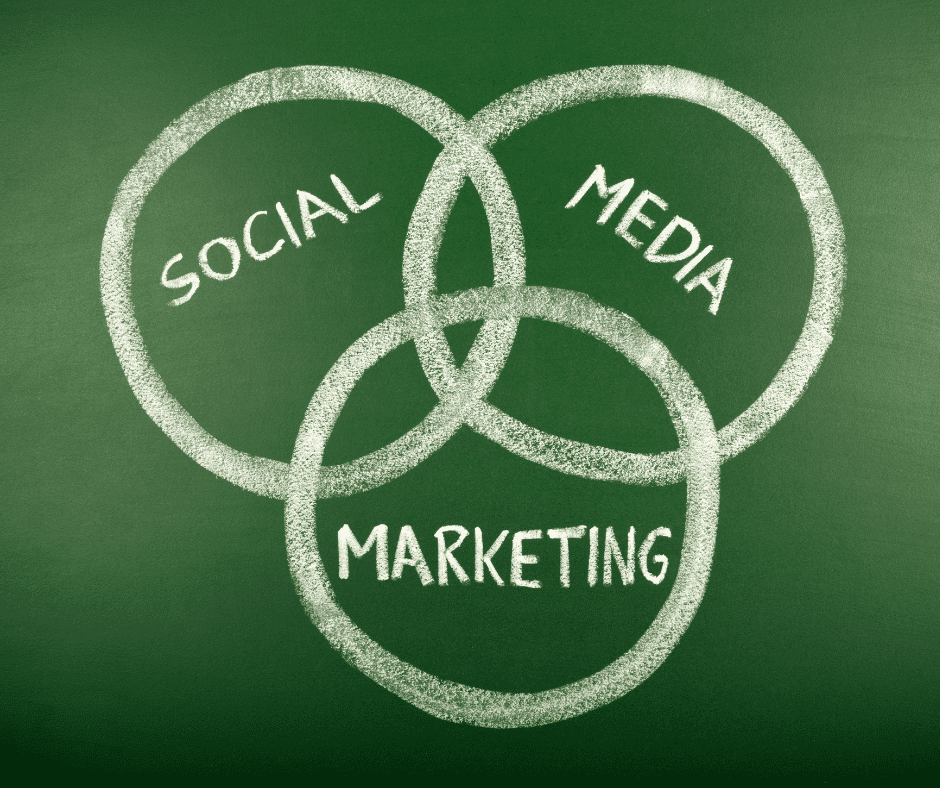Last Updated on May 16, 2025 by Val Razo
In today’s fast-moving world of social media marketing, brands are constantly seeking better ways to connect with their audience. One powerful, often underutilized tool is the use of smart ‘reaction-only’ stories — short, visually appealing formats that help create engaging experiences and collect feedback in real-time. When crafted with intention, these stories can resonate with your audience, offering valuable insights into their emotional response and helping you make informed decisions about your content strategy, products or services, and overall digital marketing efforts.
Using Instagram Stories, polls, quizzes, and other interactive elements, marketers can foster deeper connections and build an engaged community. Unlike traditional surveys or multiple-choice questions, reaction-only stories capture instinctive emotions — letting you uncover your audience’s emotional landscape quickly and authentically. Whether you’re aiming to boost engagement, enhance brand storytelling, or gather customer feedback, these stories provide a way to engage your target audience while strengthening brand loyalty.
Let’s explore how to easily create stories that not only captivate your audience but also provide the poll results and analytics needed to refine your marketing strategies and build brand trust.
Interactive content gets 2x more engagement than static content on social media.
Why Reaction-Only Stories Are a Game Changer for Polling
How Social Media Platforms Drive Emotional Marketing
Modern social media platforms are more than just places to share updates—they’re emotional ecosystems where users respond instinctively and in real time. For brands, this creates a powerful opportunity to tap into emotional marketing by using tools that feel native to the platform, like reaction-only stories.
Unlike traditional surveys or long-form customer feedback forms, reaction-only formats such as emoji sliders, likes, and taps allow users to express feelings with minimal effort. Platforms like Instagram Stories have made it simple for brands to create polls, add multiple-choice questions, and use quick reactions to get valuable insights without disrupting the user experience. These stories are easy to consume, visually appealing, and naturally integrated into how people already interact online.
By leveraging these formats, marketers can engage with your audience in a way that feels personal and responsive. This form of interaction doesn’t just provide poll results—it helps foster an emotional connection, making your social media content a core part of your broader digital marketing and content strategy.
The Psychology Behind Instant Reactions
The effectiveness of reaction-only stories lies in their ability to capture authentic emotional feedback. Human psychology shows that the more immediate the response, the more honest it tends to be. These quick reactions often reflect raw emotion—emotions like excitement, curiosity, or even confusion—that might not come through in more thought-out responses like open-text fields.
This immediacy makes them a powerful tool to measure emotional resonance in real time. Instead of overthinking, users instinctively tap or slide to express their thoughts, giving brands direct access to the emotional states of their audience. It’s a simple way to understand how your message lands—and more importantly, how it makes people feel.
When you combine these reactions with analytics, brands can begin to uncover patterns in user behavior and emotional trends. This not only improves audience interaction but also supports better marketing strategies, from product development to refining brand storytelling that truly resonates with your audience.
When we launched a new skincare line, I used reaction-only Instagram Stories to gauge immediate interest. I asked, ‘Would you try this?’ with a fire emoji slider. Within two hours, over 1,200 responses gave us real-time emotional feedback — and we adjusted our messaging before running paid ads.
How to Build Impactful Reaction-Only Story Campaigns
Using Emotional Cues to Engage With Your Audience
To create a successful reaction-only story, you need more than a clever visual — you need to understand what emotionally drives your target audience. Whether it’s curiosity, nostalgia, excitement, or empathy, aligning your content with authentic emotional cues is essential to truly engage with your audience.
Start by asking: What emotional state do I want to trigger? For example, a campaign focused on new product launches might aim for excitement and curiosity, using dynamic visuals and short video clips paired with a quiz or poll. If your goal is to foster trust, you might share stories that resonate emotionally—such as behind-the-scenes moments, team member highlights, or customer testimonials.
Emojis, colors, tone of voice, and timing all contribute to how your story is perceived. This is where understanding user behavior and emotional response comes into play. Make use of interactive elements like emoji sliders or tap-to-react icons, and consider pairing them with open-ended questions to invite deeper responses when appropriate.
When your emotional triggers are aligned with your audience’s state of mind, you don’t just get higher poll responses—you build a genuine emotional bond, improving audience engagement and reinforcing brand loyalty.
Storytelling Examples That Resonate
Here are a few storytelling examples that have proven effective across various industries:
-
Retail Brand Launch: A fashion brand introducing a new line used a mix of teaser videos, emoji sliders (e.g., “🔥 or ❄️?”), and a multiple-choice quiz about style preferences. The campaign drove over 30% more users to participate in product previews compared to static posts.
-
Tech Product Teaser: A tech company used reaction-only stories to measure real-time excitement for an unreleased product. They asked, “How excited are you?” with a fire emoji slider. The emotional response data informed their messaging for launch-day ads.
-
Nonprofit Awareness Campaign: A nonprofit used emotional stories from people impacted by their work, with interactive taps like ❤️ or 😢. The campaign saw increased brand recognition and nearly doubled shares compared to prior content.
Each of these stories didn’t just aim to inform—they aimed to captivate your audience and resonate on an emotional level. The result? More poll responses, better feedback from your audience, and content that fuels long-term engagement.
I once posted a series of stories sharing a behind-the-scenes moment with a founder. Adding a poll sticker asking, ‘Did this story move you?’ created a spike in emotional engagement — and our replies were flooded with users sharing similar experiences. That kind of reaction built real brand trust.
Tools and Techniques to Measure Emotional Responses
How to Use Poll and Quiz Stickers Strategically
The right tools can make or break your ability to gather real emotional feedback. On platforms like Instagram, using poll and quiz stickers strategically turns passive viewers into active participants. These interactive elements aren’t just fun—they’re precision tools for capturing emotional responses in real time.
To begin, create polls with simple, emotionally-driven language like “Love it or Leave it?” or “Which feeling best describes this moment?” These short prompts paired with relatable content allow users to react based on instinct, delivering more authentic input. Similarly, multiple-choice questions used in quiz formats can test knowledge, preferences, or sentiment, depending on your content strategy.
Another tip: time your stories for peak engagement—often evenings or lunch breaks—and use built-in analytics to track responses. Monitor not just participation, but the sentiment behind the results. Did most users respond with excitement? Confusion? Apathy? These trends can help you refine your message moving forward.
The key is to use a mix of formats to keep the experience fresh. Rotate between open-ended questions, sliders, polls, and quizzes. Over time, this variation boosts audience interaction while offering deeper insight into emotional trends.
Tracking and Interpreting Customer Feedback
Once your reaction-only stories are live, tracking customer feedback is essential to draw out valuable insights. Most social media management tools—like Meta Insights, Sprout Social, or Later—allow you to monitor poll results, response rates, and even replay engagement patterns to understand which parts of your story held attention.
You can also layer in AI or third-party analytics tools to detect emotional tones in written replies or open-text reactions. These tools help you measure emotional nuance in user responses, revealing whether your content sparked emotions like happiness, frustration, or empathy.
Analyzing this data enables you to identify high-performing content, improve underperforming pieces, and tailor future campaigns to better connect with your audience. It’s not just about what users clicked—it’s about how they felt. This shift from quantitative to emotional metrics is what makes reaction-only strategies so effective.
Ultimately, understanding these emotional patterns allows your team to make informed decisions, sharpen marketing efforts, and continuously build brand relevance in a crowded digital space.
Analyzing Emotional Polling Results With Smart Analytics
How to Measure Emotional Impact
Gathering reactions is only the first step — the real value lies in what you do with that data. Measuring emotional impact means interpreting how users feel about your social media content, not just what they click on. That’s where smart analytics tools come into play.
Platforms like Instagram Insights, Meta Business Suite, or third-party software such as Sprout Social or Hootsuite can help track metrics including poll responses, emoji slider results, tap-through rates, and completion rates. These numbers offer clues into how well your story resonates with your audience emotionally.
But numbers alone don’t tell the full story. To truly understand emotional states, combine engagement data with sentiment analysis tools that decode emotions like happiness, frustration, or curiosity in text replies or DMs. AI-driven sentiment features are now baked into many social media management tools, giving you deeper insight into your audience’s emotional response.
Evaluating this feedback helps marketers go beyond vanity metrics like reach or impressions and instead focus on emotional resonance — a far more powerful indicator of future behavior and brand loyalty.
72% of consumers say they feel more connected to brands whose content is emotionally resonant.
What the Data Can Uncover About Your Brand
By continuously analyzing emotional polling data, brands can uncover how they’re perceived — and whether their message is truly connecting. Did your story evoke excitement, or did it fall flat? Are users consistently showing interest in behind-the-scenes content but ignoring product promotions? These are the patterns that can guide real strategy shifts.
For instance, if your audience consistently reacts positively to open-ended questions about personal experiences with your brand, you may want to integrate more brand storytelling into your social media marketing. If a specific story format leads to high exit rates or lower interaction, it may signal a misalignment between your tone and your target audience.
Additionally, these insights help inform everything from product development to content strategy. Understanding which emotions your brand most often triggers can help you tailor future messaging, choose the right interactive elements, and ensure your content resonates with the right people at the right time.
Ultimately, turning emotional data into action is how you evolve from simply collecting customer feedback to designing experiences that truly engage your audience and build stronger relationships.
How to Use Emotional Polling to Build Brand Loyalty
Boost Engagement Through Social Media Content
Emotional polling isn’t just a tactic — it’s a strategic tool to boost engagement and create memorable social media content. When audiences are encouraged to react emotionally, they feel involved. That emotional involvement increases the likelihood they’ll return, respond, and share — all of which fuel your overall social media presence.
Effective emotional polling content invites users to participate in shaping the brand narrative. Whether you’re running a quiz, sharing a behind-the-scenes post, or asking for feedback on products or services, you’re signaling that their opinion matters. This builds trust and encourages repeat interaction.
To maximize this effect, design your stories with variety and consistency. Use a mix of multiple-choice questions, emoji sliders, and short videos. Make them visually appealing, keep the messaging simple, and align each story with a broader content strategy that reflects your brand tone. This balance between familiarity and creativity keeps your audience emotionally invested.
Over time, consistent audience engagement through stories helps build a loyal following — not just because your content is good, but because it makes people feel seen, heard, and emotionally connected.
In 2023, Starbucks used reaction-only polls on Instagram to test seasonal drink preferences before launch. Using emoji sliders and polls like “Pumpkin or Peppermint?” they gathered thousands of responses. The feedback helped them prioritize marketing spend and flavor distribution.
Brand Storytelling That Drives Action
At the heart of every successful emotional polling campaign is brand storytelling. It’s not about asking for a reaction — it’s about using that reaction to fuel deeper emotional narratives. The more people interact with your brand, the more opportunities you have to craft stories that reflect their values, interests, and aspirations.
For example, sharing results from a recent poll or spotlighting user-generated content reinforces the idea that your brand is listening. Creating “you voted, here’s what we did” posts shows responsiveness, building a cycle of trust and appreciation.
When your audience sees how their emotional input leads to tangible change — whether in product development, messaging, or new offerings — you transform feedback into shared ownership. That sense of inclusion drives not just loyalty, but brand advocacy.
The most impactful stories are those that reflect real emotions, real people, and real decisions. By embedding emotional marketing into your social media marketing efforts, you don’t just increase reactions — you build brand trust and loyalty that lasts.
Conclusion
In an age where attention is fleeting and competition is fierce, reaction-only stories offer a unique advantage: the ability to quickly engage with your audience and capture genuine, instinctive feedback. By using polls, quizzes, and other interactive elements, you create experiences that not only entertain but also uncover meaningful insights into your audience’s emotional response.
Through strategic use of analytics, brands can measure emotional resonance, track trends, and adapt their content strategy in real time. The result? Smarter, more impactful campaigns that deepen your emotional connection with followers and help build brand loyalty over time.
Whether you’re looking to improve social media marketing, refine your marketing strategies, or simply deliver content that resonates, emotional polling is one of the most direct and effective paths to achieving your goals.
Now is the time to leverage these tools, test, iterate, and create compelling stories that make your audience feel seen — and more importantly, stay connected to your brand.
Frequently Asked Questions
How can AI-powered tools improve emotional polling in social media stories?
AI-powered tools can analyze emotional reactions in social media stories by identifying patterns in taps, swipes, and responses. They help marketers interpret sentiment, suggest content optimizations, and even predict future engagement — all in real time.
What are some ways to encourage more audience participation in reaction-only polls?
To increase audience participation, keep your questions short and emotionally engaging. Use multiple choice questions, relatable visuals, and CTA language like “Tap to react” or “Pick your vibe.” Stories that feel conversational and human drive more interaction.
How do reaction-only stories contribute to brand awareness?
Reaction-only stories boost brand awareness by sparking quick emotional responses, making your brand more memorable. When users share their experiences, your content reaches new viewers organically, helping you build brand recognition through emotional resonance.
Can you share examples of brands using social media posts for emotional polling?
Examples of brands using this strategy include Glossier, which asks followers to pick products via polls, and Netflix, which gauges excitement for new shows through emoji sliders. These social media posts combine emotional cues with participation to shape future content.
What types of questions keep users engaged in social media stories?
Questions to keep your audience engaged include light-hearted prompts like “How does this make you feel?” or “What’s your go-to mood for Mondays?” These open-ended or emotion-focused multiple choice questions help trigger emotions like excitement, curiosity, and nostalgia.
Author Bio
Val Razo
Val Razo is a skilled professional in the field of Instagram Marketing. With over five years of experience as a freelance Social Media Marketing consultant, Val has assisted numerous small and medium-sized businesses in achieving their goals.




